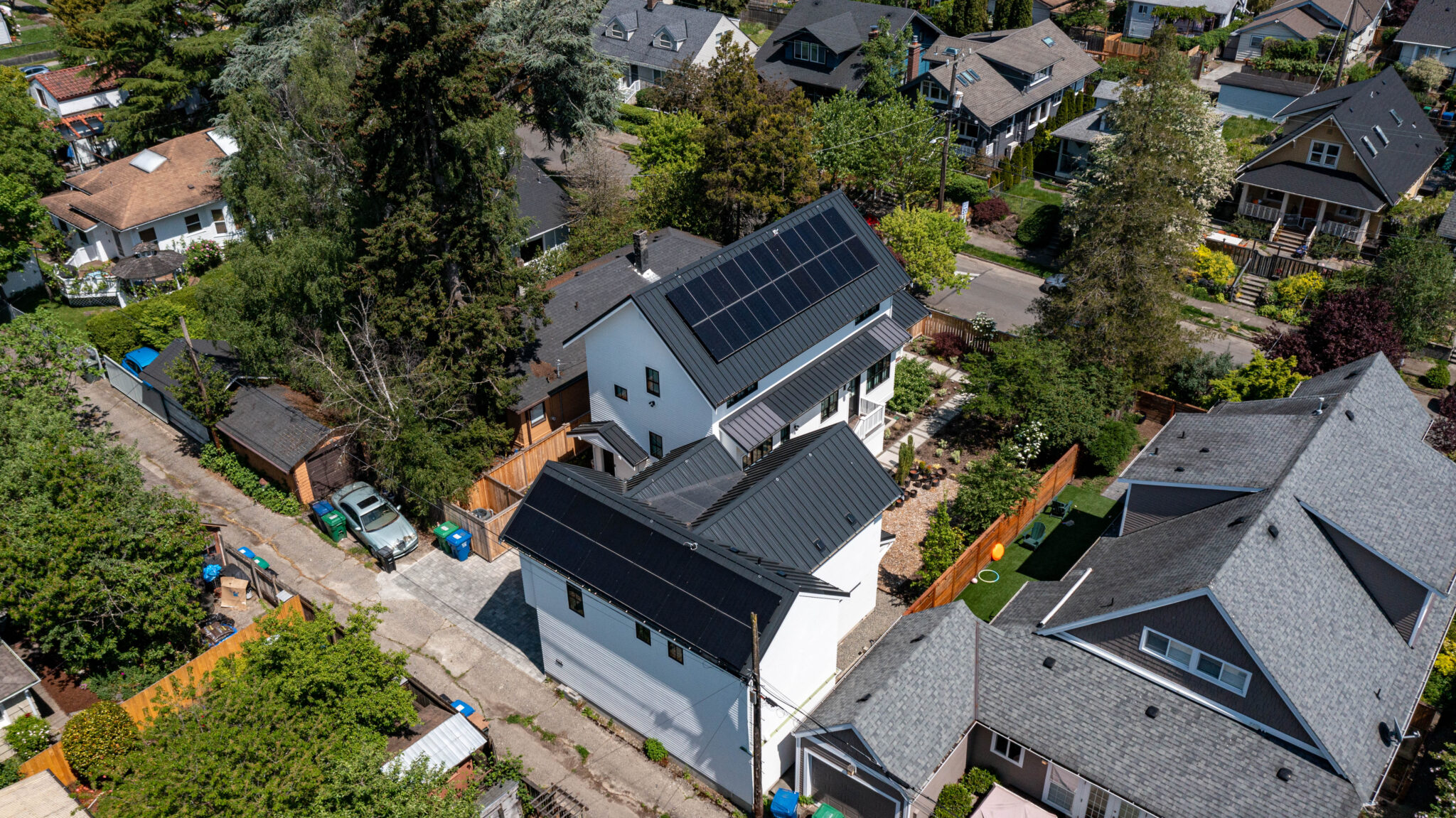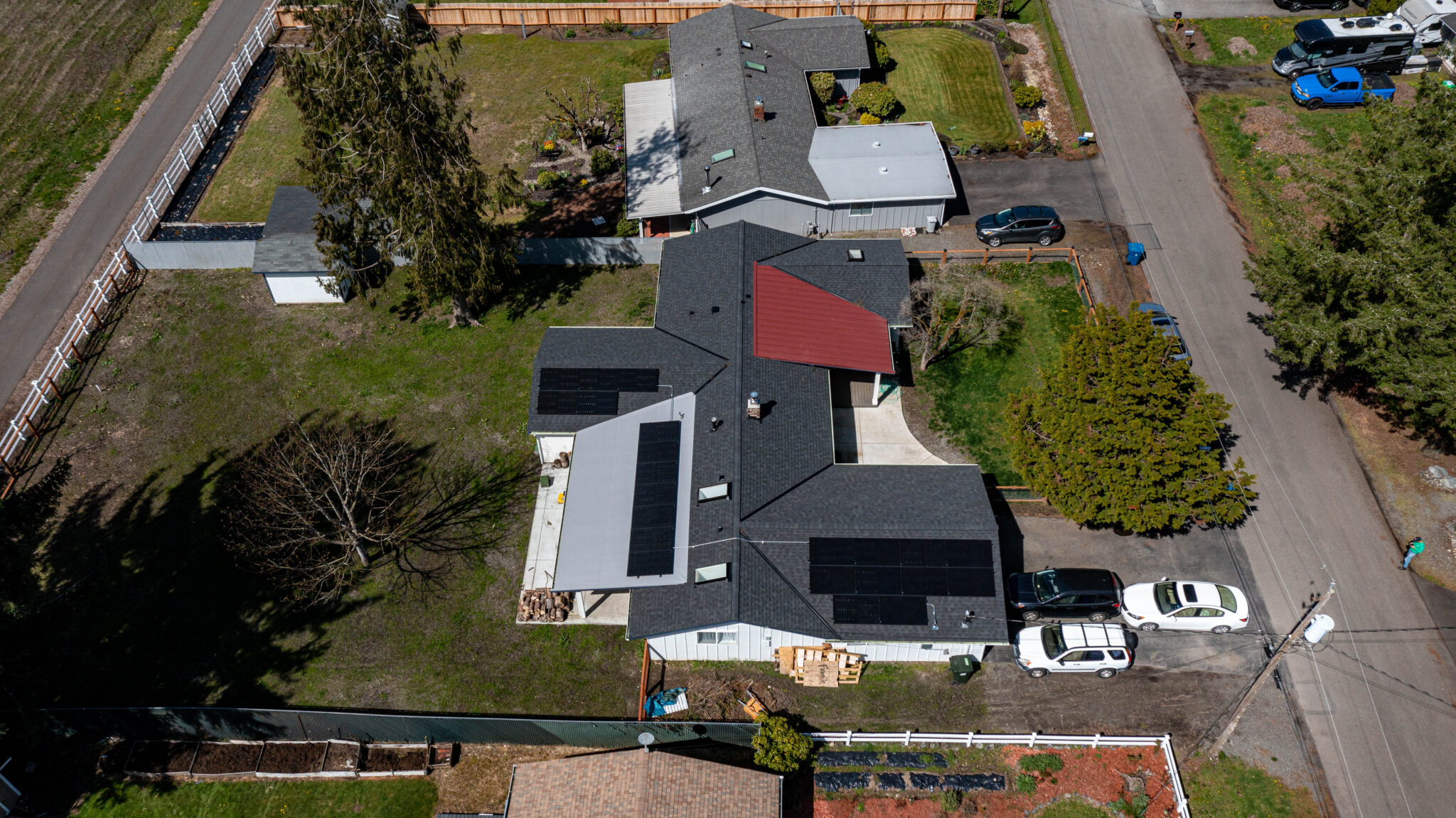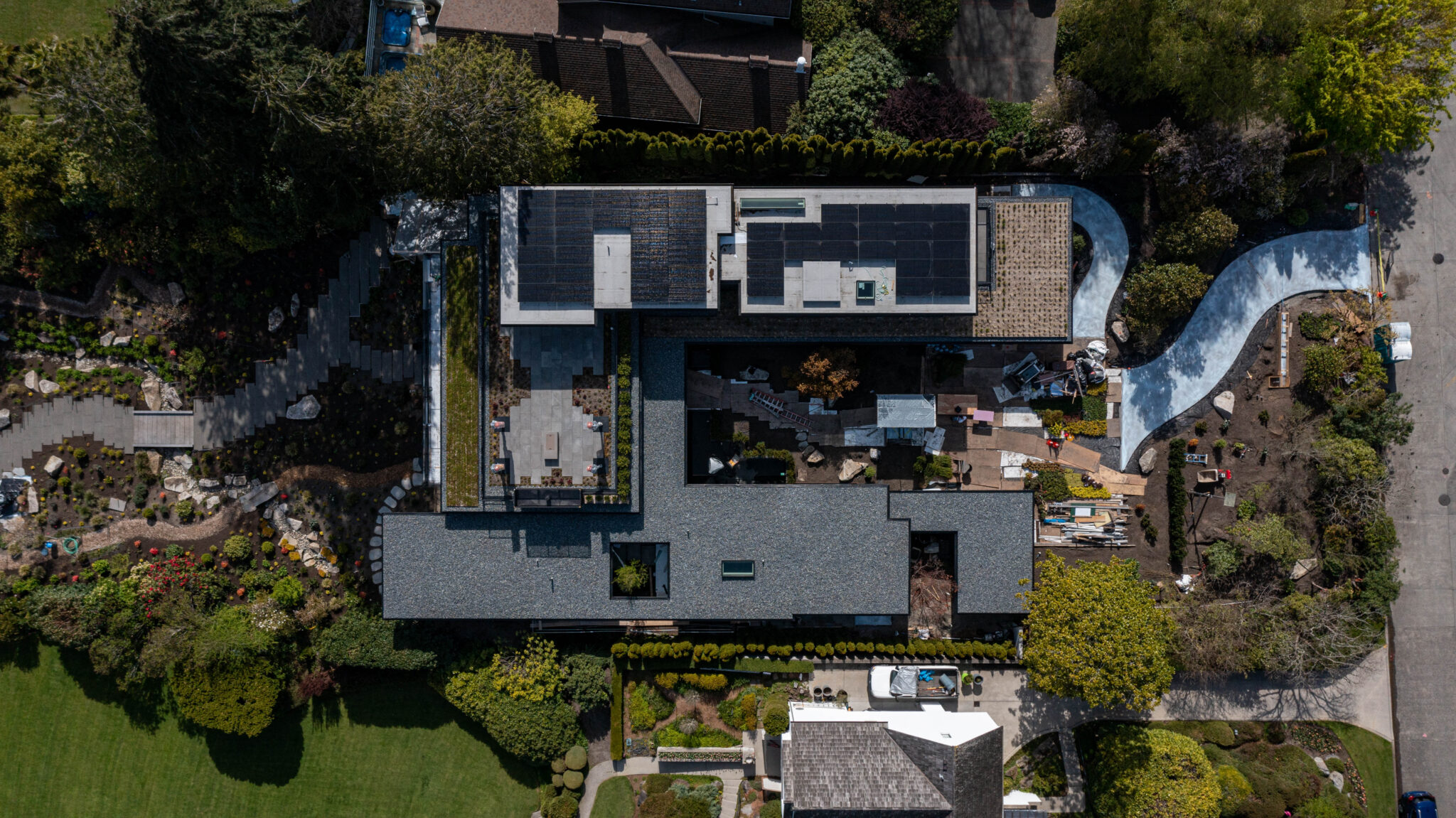How Do Home Solar Panels Work?
Understanding how home solar panels work is a gateway to harnessing clean energy in the era of sustainable living. In this article, we’ll explore the fascinating science behind these panels, unlocking the secrets of turning sunlight into power for your home.
Here Is the Process on How Residential Solar Panels Work
-
Solar Cells Absorb the Photons

At the heart of solar panels are photovoltaic cells, commonly known as solar cells. These cells play a crucial role by absorbing sunlight in the form of photons. As photons interact with the semiconductor material within the cells, they generate an electric current through the photovoltaic effect.
-
A Solar Inverter Converts DC Energy to AC Energy

The electricity produced by solar cells is in direct current (DC) form. However, most household appliances operate on alternating current (AC). Enter the solar inverter, a pivotal component that transforms the DC energy generated by the solar cells into the AC energy required to power your home seamlessly.
-
Usable Energy Flows to Your Home

Once converted to AC energy, the electricity flows into your home’s electrical panel, becoming part of the power supply that operates your lights, appliances, and electronic devices. This direct integration allows solar energy to become a seamless and eco-friendly part of your daily life.
-
A Net Meter Monitors Your Power Use

To ensure efficient energy consumption and grid connectivity, a net meter is employed. This device monitors both the electricity your solar panels generate and the power your household consumes from the grid. The net meter provides valuable data on your energy usage, helping you make informed decisions about your electricity consumption.
-
Solar Batteries Store Your Excess Energy

Solar energy generation is not limited to immediate consumption. Excess energy produced during sunny periods can be stored for later use. Solar batteries come into play by storing surplus electricity, creating a reservoir of power that can be tapped into during periods of low sunlight or increased demand.
Understanding the intricate workings of solar panels illuminates the transformative journey of sunlight to sustainable energy within your home. As technology advances, so does our ability to harness and maximize the potential of solar power for a greener, more sustainable future.

How is Solar Energy Used to Power Your Home?
Harnessing solar energy to power your home involves seamlessly integrating advanced technology. New homes built with solar panels are equipped with photovoltaic cells, capture sunlight, and convert it into electricity through intricate processes. This generated power is fed into your home’s electrical system, supplying clean and renewable energy to fuel your daily activities. Whether illuminating your living space or powering your appliances, solar energy is a sustainable solution that contributes to a greener and more eco-friendly lifestyle.
What Types of Materials Are Used in Solar Panels?
Solar panels are constructed using specialized materials designed to enhance efficiency and durability. These materials contribute to the functionality of solar cells and ensure the effective conversion of sunlight into electricity. Here are the key components used in solar panels:
Photovoltaic Cells: These cells, often made of silicon, are the building blocks of solar panels. They absorb sunlight and initiate the photovoltaic process, converting photons into electrical current.
Semiconductor Materials: Typically made from silicon, these materials play a crucial role in the photovoltaic effect. When exposed to sunlight, silicon releases electrons, generating an electric current.
Metal Frame: Solar panels feature sturdy metal frames, usually made of aluminum, providing structural support and protection for the delicate internal components against environmental factors.
Glass Cover: The top layer of solar panels is typically made of tempered glass. This transparent cover protects the internal components from weather elements while allowing sunlight to pass through for optimal energy absorption.
These materials work in harmony to create solar panels capable of efficiently converting sunlight into a sustainable power source for homes and businesses alike.
How Does Sun Exposure Affect Solar Panel Efficiency?
The efficiency of solar panels is intricately tied to sun exposure, making it a critical factor in their performance. Sunlight intensity, duration, and incidence angle all influence solar panels’ energy output. Understanding these factors is crucial for maximizing the effectiveness of solar energy systems.
Sunlight Intensity: Higher sunlight intensity directly correlates with increased energy production. Regions with consistent and intense sunlight generally yield higher solar panel efficiency as the photovoltaic cells absorb more photons, generating more electricity.
Sunlight Duration: The number of sunlight hours per day also impacts efficiency. Longer exposure to sunlight allows solar panels more time to convert sunlight into electricity, enhancing overall energy output.
Angle of Incidence: The angle at which sunlight strikes the solar panels affects efficiency. Panels are most efficient when sunlight hits them perpendicularly. Tracking systems or adjustable mounts can optimize panel angles for increased daily efficiency.
Temperature: Solar panels can be sensitive to temperature changes. While they generate electricity more efficiently in cooler conditions, excessive heat can slightly reduce their efficiency. Proper ventilation and design considerations can mitigate temperature-related impacts.
Understanding how sun exposure influences solar panel efficiency empowers homeowners and businesses to make informed decisions when planning installations.
Reasons to Install Solar Panels on Your Home
-
Cost-Effectiveness

Investing in solar panels can significantly reduce electricity bills over time. While the initial setup may involve expenses, the long-term savings on energy costs make solar panels a cost-effective choice for homeowners.
-
Easy Installation and Maintenance

Modern solar panel installations are designed for easy integration onto existing structures, making the installation process relatively straightforward. Additionally, solar panels have minimal maintenance requirements, with occasional cleaning and checks ensuring optimal performance.
-
Adaptable to Any Lifestyle or Location

Solar panels can be tailored to fit various architectural styles and locations. Whether you live in an urban apartment or a rural farmhouse, solar panel systems can be adapted to suit different lifestyles and locations, providing flexibility in their application.
-
Solar Offers a Backup Power Source

Solar panels can serve as a reliable backup power source during grid outages. Battery storage systems allow homeowners to store excess energy generated during sunny periods for use during cloudy days or power interruptions, enhancing household energy resilience.
Can a Home Be 100% Solar?
Achieving a 100% solar-powered home is an exciting prospect in the era of sustainable living. Technological advancements in solar energy systems and energy-efficient practices make it increasingly feasible for homes to meet all their energy needs through solar power.

How Many Solar Panels Do You Need to Power a House?
Determining the number of solar panels required to power a house involves various factors such as energy consumption, location, and the efficiency of the solar panels. To estimate, consider your location’s average energy consumption in kilowatt-hours (kWh) per day and the average sunlight hours. Typically, a residential solar system might require anywhere from 20 to 40 solar panels for an adequate power supply.
How Does Solar Power Work at Night?
The challenge of harnessing solar power at night is addressed by integrating solar battery storage systems. During the day, excess energy generated by solar panels is stored in these batteries. At night or during periods of low sunlight, the stored energy is utilized to power your home, ensuring a continuous and reliable energy supply. This innovative solution allows homeowners to benefit from solar power around the clock, making solar energy a viable and sustainable option for residential use.

Do Solar Panels Work on Cloudy Days?
The functionality of solar panels on cloudy days is a common query, given the dependence on sunlight for power generation. While solar panels are most efficient under direct sunlight, they can still generate electricity on cloudy days. Here’s why:
Diffuse Sunlight: Solar panels can capture diffuse sunlight, which scatters in the atmosphere even on cloudy days. Solar panels can still convert this diffuse light into electricity, while the energy output may be lower than on sunny days.
Advanced Technology: Technological advancements, such as thin-film solar panels and improved photovoltaic cells, have enhanced the ability of solar panels to work under low-light conditions. These innovations make modern solar systems more resilient to fluctuations in sunlight intensity.
Partial Sunlight Utilization: Even on overcast days, there are often periods of partial sunlight. Solar panels can still harness the available sunlight during these intervals, contributing to the overall energy production.
In summary, while the efficiency of solar panels may decrease on cloudy days, they are not rendered completely ineffective. Solar technology continues to evolve, making solar energy a reliable and viable option even in less-than-ideal weather conditions.
Embracing Solar Power for a Sustainable Future
In conclusion, the journey through the intricacies of solar energy reveals a compelling narrative of innovation, efficiency, and environmental stewardship. The potential for a sustainable energy future is within reach, from the absorption of photons by solar cells to the seamless integration of solar power into daily life.
As we explore the feasibility of 100% solar-powered homes, address questions about cloudy days, and calculate the number of panels needed, it’s evident that solar energy is not just a trend but a transformative force.
Companies like Northwest Electric and Solar are pivotal in shaping this narrative. With a commitment to excellence and sustainability, Northwest Electric and Solar have experts who know how solar system work at home.
We have expertise in solar panel installations and our dedication to customer satisfaction empowers individuals and communities to embrace clean energy solutions.
Northwest Electric and Solar in Washington State has innovative approaches that underscore the practicality and viability of solar power, contributing significantly to the broader movement toward a greener, more sustainable future.
As we continue to explore and adopt solar technologies, collaborations with forward-thinking entities like Northwest Electric and Solar pave the way for a brighter, cleaner, and more eco-conscious tomorrow. Request a quote today!


